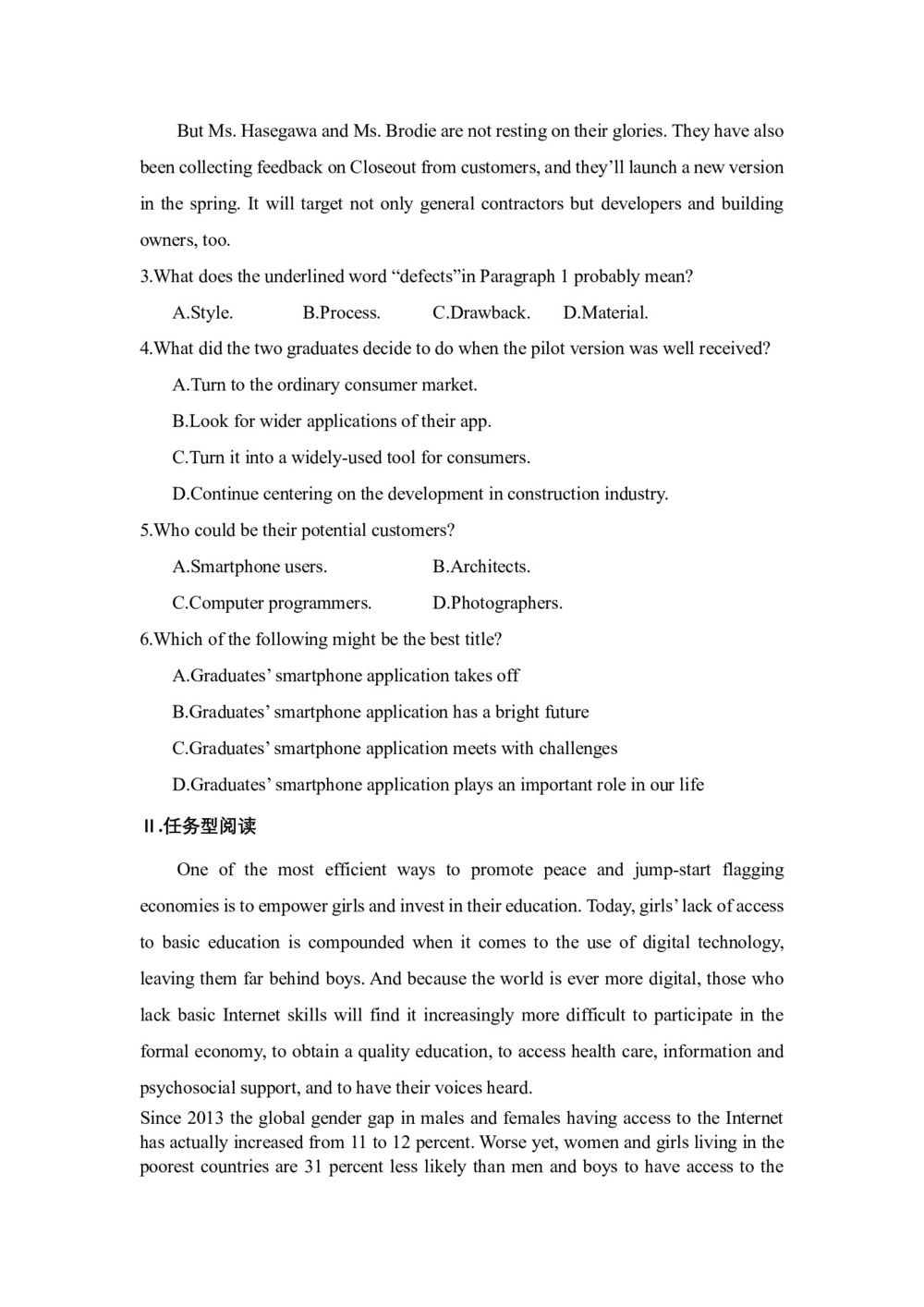
But Ms. Hasegawa and Ms. Brodie are not resting on their glories. They have also been collecting feedback on Closeout from customers, and they'll launch a new version in the spring. It will target not only general contractors but developers and building owners, too.
3.What does the underlined word "defects"in Paragraph 1 probably mean?
A.Style. B.Process. C.Drawback. D.Material.
4.What did the two graduates decide to do when the pilot version was well received?
A.Turn to the ordinary consumer market.
B.Look for wider applications of their app.
C.Turn it into a widely-used tool for consumers.
D.Continue centering on the development in construction industry.
5.Who could be their potential customers?
A.Smartphone users. B.Architects.
C.Computer programmers. D.Photographers.
6.Which of the following might be the best title?
A.Graduates' smartphone application takes off
B.Graduates' smartphone application has a bright future
C.Graduates' smartphone application meets with challenges
D.Graduates' smartphone application plays an important role in our life
Ⅱ.任务型阅读
One of the most efficient ways to promote peace and jump-start flagging economies is to empower girls and invest in their education. Today, girls' lack of access to basic education is compounded when it comes to the use of digital technology, leaving them far behind boys. And because the world is ever more digital, those who lack basic Internet skills will find it increasingly more difficult to participate in the formal economy, to obtain a quality education, to access health care, information and psychosocial support, and to have their voices heard.
Since 2013 the global gender gap in males and females having access to the Internet has actually increased from 11 to 12 percent. Worse yet, women and girls living in the poorest countries are 31 percent less likely than men and boys to have access to the Internet. In developing countries, some 200 million fewer women than men own a mobile phone, the most common means of Internet access there. This digital divide is increasing, and should it continue at
-
相关试卷下载
- 12018--2019学年人教版选修七unit 2 robots using language课时作业(5)
- 22018--2019学年人教版选修七unit 2 robots using language课时作业(6)
- 32018--2019学年人教版选修七unit 2 robots using language课时作业(7)
- 42018--2019学年人教版选修七unit 2 robots using language课时作业(3)
- 52018--2019学年人教版选修七unit 2 robots using language课时作业(10)
- 62018--2019学年人教版选修七Unit 2 Robots language points课时作业(9)
- 72018--2019学年人教版选修七Unit 2 Robots learning about language课时作业(9)
- 82018--2019学年人教版选修七Unit 2 Robots reading课时作业(9)
- 92018--2019学年人教版选修七Unit 4 Sharing Using language课时作业(9)